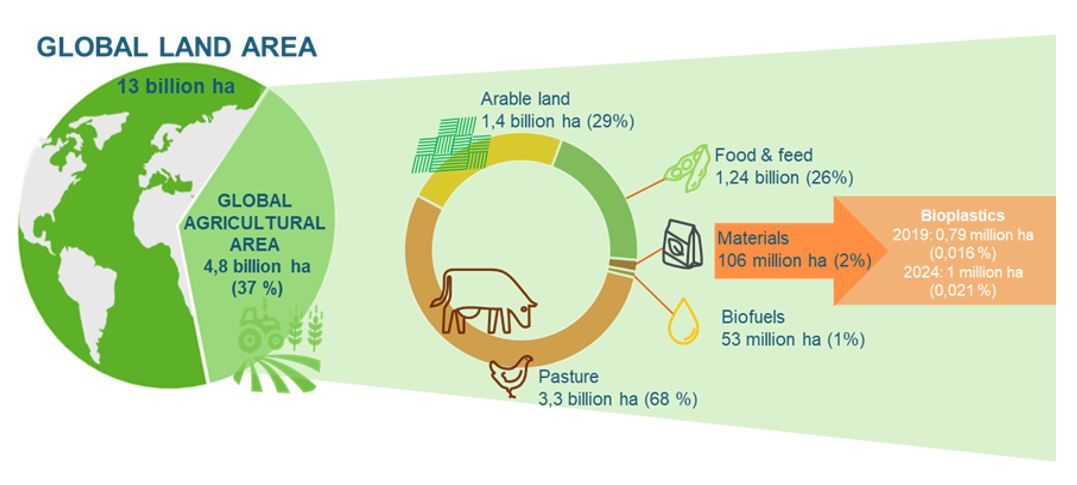Currently, the share of the bioplastics from the overall global plastics production is only 1% (2.1Mt), and it is applied largely for packaging solutions. Globally, sustainability strategies of different countries include replacement of fossils with renewables, however, this intended increase in biomass use will potentially lead to trade-offs that need to be studied. In 2019, material use took up to 2% of global agricultural area, from this share biobased plastics covered approximately 0.016%:

Source: European Bioplastics 2019
Based on estimations if all global fossil plastics are to be produced from biomass, the demand for feedstock would grow to 5% of the total amount of biomass produced and harvested each year. The figure does not account for the use of side and waste streams. Subsequently, this increased share competes with other uses of land such as Food & Feed. When the projections for global food increase are considered, the sources for bio-sourced plastics should be focused on the utilization of side and waste streams, and wood biomass from forests. But as forests act as a carbon sink, their use to respond to the global biomass increase is cumbersome. Forests as source of biomass already have competing applications, such as for construction, different materials, and energy generation. In addition, forests as a source of fibre are seen as a solution for instance also in textile sector to replace emission intensive materials such as cotton (requiring vast amount of water, pesticides, fertilizer and arable land). Thus, the capacity of different biomasses in the production of plastics should be assessed from the sustainability perspective to ensure which applications are the most impactful ones for mitigating the climate change and reducing the environmental impacts. At same time, in driving the use of bioplastics, it is crucial to note the difference in biobased materials and biodegradable materials – biobased materials do not mean that the material is biodegradable. Bio-based solution does not necessarily ensure circularity.
For the municipalities, the critical issue is to solve how the material can be recycled back into materials without losing or minimizing its value. For instance, biodegradability should be taken into account from the function aspect, as the feature is not always necessity for every application. In design, biobased and biodegradable products should be aimed at re-circulation, although for each application the expediency of different circular economy strategies should be evaluated carefully.
Product life cycle stages & Modules (EN15978): A1 Raw materials supply
Comments ()